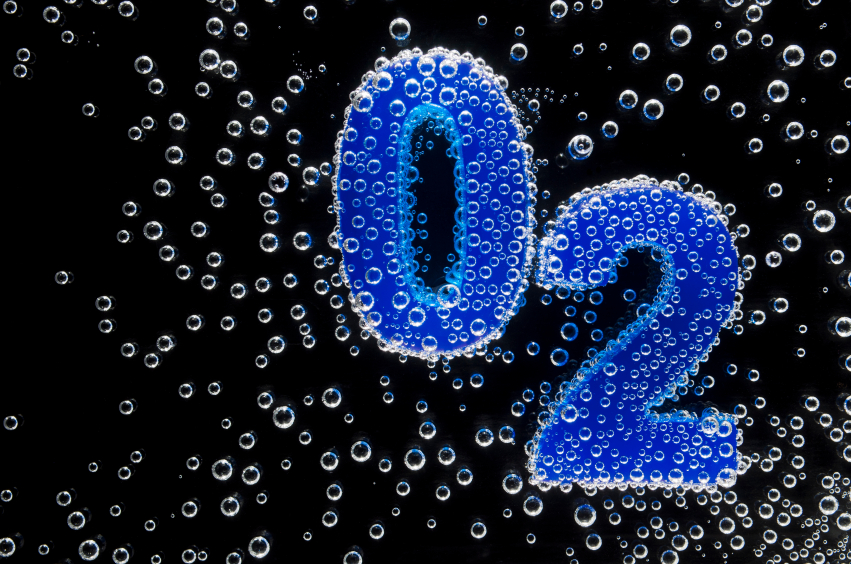What is Oxygen Toxicity in Diving? Symptoms, Causes and Prevention
Oxygen is key for all life on Earth. But in excess amounts, it can be deadly. For divers, oxygen toxicity poses a real risk that can only be combated with sound knowledge and dive skills. In this article, we’re going through the ins and outs of oxygen toxicity, from symptoms and causes to prevention methods.
What is Oxygen Toxicity in Scuba Diving?
Every time you breathe a gas with an oxygen content higher than 21%, the risk of oxygen toxicity is present. Our body is adapted to function while breathing an oxygen partial pressure of 0.21. Oxygen toxicity occurs when we are exposed to a higher partial pressure of oxygen than normal, for a given period of time. Generally speaking, the higher the partial pressure, the lower the allowable exposure time is.
There are two types of oxygen toxicity, which affect the body differently:
- Pulmonary Oxygen Toxicity
- Central Nervous System Oxygen Toxicity
Let’s take a closer look at these two types of oxygen toxicity.
Pulmonary Oxygen Toxicity
First observed by Lorrain Smith in 1899, pulmonary oxygen toxicity is the result of breathing a partial pressure of oxygen greater than 0.21 for extended periods of time.
It begins with an inflammation of the lungs, which can develop into alveolar damage and reduced lung function. Luckily, the effects are almost entirely reversible if treated correctly.
This type of oxygen toxicity is less of a concern for most technical and recreational divers, as they’re not exposed to elevated oxygen partial pressures for a long enough time. The only time this could occur is during very long technical dives as well as during repetitive technical dives over multiple days.
Pulmonary O2 toxicity is more of a risk for commercial saturation divers, patients undergoing hyperbaric oxygen therapy and those breathing high oxygen percentages in intensive care units (ICUs).
Central Nervous System Oxygen Toxicity

Observed first by Paul Bert in 1878, central nervous system (CNS) oxygen toxicity occurs when breathing a high oxygen partial pressure for a comparatively shorter period of time.
For recreational and technical divers, CNS oxygen toxicity is our main concern. If we exceed recommended oxygen partial pressure limits, or CNS loads, the risk of CNS toxicity is significantly increased. It can occur within minutes of breathing a high oxygen partial pressure, and without any physiological warning. It affects the spinal cord and brain, resulting in seizures and tissue damage.
So what causes O2 toxicity?
What Causes Oxygen Toxicity?
CNS Oxygen toxicity is caused by the activity of ‘reactive oxygen species’ (ROS), also known as ‘oxygen radicals’.¹
ROS are highly reactive molecules formed as a result of collisions between oxygen molecules.
The higher the partial pressure of oxygen, the greater the amount of ROS.
ROS cause damage through the inactivation of enzymes and reshaping of proteins. Specifically, ROS bind with nitric oxide (NO) molecules which control the sympathetic nervous system. This binding suppresses the activity of NO molecules, which leads to the uncontrolled release of adrenaline and noradrenaline. This results in what’s known as an adrenergic storm.¹
The consequences of this are increased heart rate, blood pressure, cell and tissue damage, and seizures.
If this happens underwater, the chances of death by drowning and/or gas embolism are extremely high.
Oxygen Toxicity Symptoms
Depending on the type of oxygen toxicity, the symptoms differ.
The symptoms of pulmonary O2 toxicity are:
- A persistent cough
- Pain on inspiration
- Chest tightness and difficulty breathing
- Collapse of the alveoli
- Pulmonary edema
In extreme cases, or where treatment is not provided, victims will die of hypoxia (insufficient oxygen) as lung damage prevents effective gas exchange.
The symptoms of CNS O2 toxicity can be identified with the acronym CONVENTID:
- CONvulsion
- Vision
- Ears
- Nausea
- Twitching
- Irritability
- Dizziness
That said, CNS O2 toxicity can often occur without any warning symptoms.
It’s not the seizure that kills the diver in CNS oxygen toxicity – rather, it’s drowning and/or embolism if an ascent is attempted.
How to Prevent Oxygen Toxicity in Scuba Diving
O2 toxicity is something no one wants to experience.
Luckily for us, however, it’s easy to avoid.
For recreational divers, a maximum partial pressure of oxygen of 1.4 ATA is recommended. This gives recreational nitrox divers a good safety buffer, making the risk of CNS toxicity minimal. This is especially so as recreational divers don’t breathe 1.4 ATA for long periods of time.
For technical divers, a maximum of 1.6 ATA is recommended, and only during decompression where the body is at rest. Compared to what some military divers use, 1.6 ATA is still a conservative number, which allows for decompression efficiency while minimising the risk of a seizure.
Similarly, exposure time recommendations for increasing partial pressures also protect divers against CNS toxicity. For example, the National Oceanic and Atmospheric Administration (NOAA) recommends a maximum of 45 minutes exposure time at 1.6 ATA.²
Oxygen Toxicity Risk Factors
Research is still being conducted today into the factors that play a role in O2 toxicity.
Here’s a quick summary of what we know so far:
Carbon dioxide levels in the blood can affect your risk of CNS O2 toxicity. Exertion, dead space in breathing equipment and increased gas density at depth can cause carbon dioxide levels in the body to rise above the normal amount. This can increase the amount of ROS present, further increasing the likelihood of a seizure.
Exertion, therefore, can also increase your risk of CNS toxicity, due to carbon dioxide retention and ROS creation.
Cold temperatures may also play a role in CNS O2 toxicity, although the exact mechanism is not yet clear.
Individual variability plays a large role in oxygen toxicity. The metabolism and circadian rhythm, as well as sleep and fitness can all contribute to an individual’s day-to-day susceptibility.³
Make the Next Step: Lagona Divers – Technical
Whether it’s deep rebreather diving, gas blending or your first tech diving course, Lagona Divers Technical is here to help.
Contact us today to arrange your next course or guided dives here in sunny Dahab, Egypt! Don’t forget, if you’ve visited us before, you can also join our Lagona Club!
References
- Denoble, P.J. (2013) Understanding Oxygen Toxicity. Divers Alert Network. Accessed 19.09.22. URL: https://dan.org/alert-diver/article/understanding-oxygen-toxicity/.
- Thalmann, E. (n.d.) Oxygen Toxicity. Divers Alert Network. Accessed 19.09.22. URL: https://dan.org/health-medicine/health-resources/diseases-conditions/oxygen-toxicity/.
- Fogarty, R. (2013) ‘Understanding Oxygen Toxicity Part II: Hypothesis and Hyperoxia’ in In Depth. Global Underwater Explorers (GUE). Accessed 19.09.22. URL: https://gue.com/blog/understanding-oxygen-toxicity-part-ii-hypotheses-and-hyperoxia/.


